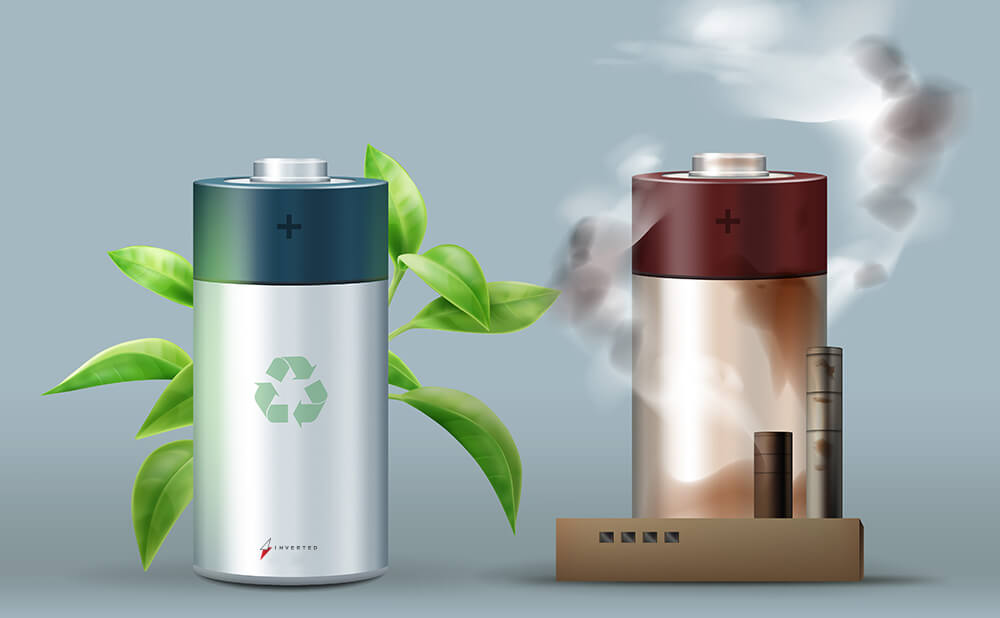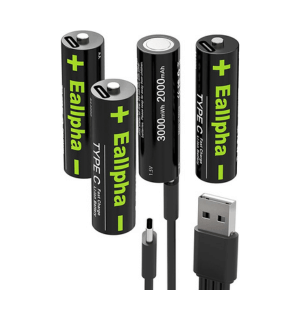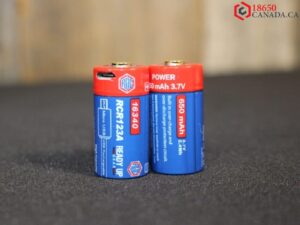Importance of Maximizing Lithium-Ion Battery Capacity
In this article, we explore techniques to enhance lithium-ion battery capacity, the power source behind our portable devices. We begin by understanding the factors that affect battery capacity, including battery chemistry, charge and discharge rates, temperature, and aging.
Then, we delve into practical techniques to maximize battery capacity, such as optimizing charging practices, managing discharge and usage, temperature management, and battery maintenance.
Additionally, we discuss advanced techniques like battery calibration, conditioning, and the use of battery management systems. By implementing these techniques, users can unleash the full potential of their lithium-ion batteries, ensuring longer-lasting power for their devices.
Lithium-ion batteries serve as the backbone of our portable electronic devices, and maximizing their capacity is crucial for longer usage time and optimal performance. Enhancing battery capacity allows users to enjoy extended device usage without the need for frequent recharges.
Impact of Battery Capacity on Device Performance
Battery capacity directly affects device performance by determining how long a device can operate on a single charge. A higher battery capacity means longer usage time, improved device responsiveness, and enhanced user experience.
Understanding Lithium-ion Battery Capacity
Definition of Battery Capacity
Battery capacity refers to the amount of electrical charge a lithium-ion battery can store and deliver. It is typically measured in milliampere-hours (mAh) or watt-hours (Wh). The higher the capacity, the more charge the battery can hold and the longer it can power a device.
Factors Affecting Lithium-Ion Battery Capacity
Several Factors Influence the Capacity of a Lithium-Ion Battery:
Battery chemistry and materials: The specific chemistry and materials used in the battery’s construction impact its capacity. Different types of lithium-ion batteries offer varying levels of capacity.
Charge and discharge rates: Rapid charging or discharging at high rates can affect the effective capacity of the battery. Slower and controlled charging and discharging can help maintain optimal capacity.
Temperature effects: Extreme temperatures, both hot and cold, can affect battery capacity. Operating and storing batteries within the recommended temperature range can help preserve capacity.
Aging and degradation: Over time, lithium-ion batteries may experience capacity loss due to chemical reactions and cell degradation. Proper battery management and care can slow down this degradation process.
Techniques to Enhance Lithium-ion Battery Capacity
To maximize the capacity of lithium-ion batteries, consider the following techniques:

Optimizing Charging Practices
Avoid overcharging: Disconnect the charger once the battery reaches its full capacity. Overcharging can strain the battery and lead to a capacity loss over time.
Utilizing proper charging equipment: Use chargers and cables recommended by the device manufacturer to ensure compatibility and optimal charging performance. Incompatible chargers may not provide the correct voltage and current, affecting battery capacity.
Charging at optimal temperature range: Charge the battery in a moderate temperature environment. Extreme temperatures can negatively impact capacity and overall battery health.
Managing Discharge and Usage
Avoiding deep discharges: While lithium-ion batteries do not suffer from the “memory effect” like older battery technologies, deep discharges can still affect their capacity. Recharge the battery before it reaches critically low levels to maintain optimal capacity.
Minimizing high discharge rates: High discharge rates put stress on the battery and can impact its capacity. Avoid activities that excessively drain the battery, such as running resource-intensive applications or playing graphics-intensive games for prolonged periods.
Optimizing device settings and usage habits: Adjusting device settings, such as screen brightness, background app refresh, and connectivity options, can help optimize battery usage and preserve capacity. Additionally, adopting power-saving habits like reducing screen-on time and disabling unnecessary notifications can contribute to longer battery life.
Temperature Management
Avoiding extreme temperatures: Exposing lithium-ion batteries to extreme heat or cold can affect their capacity and overall performance. Avoid leaving devices in direct sunlight, hot cars, or extremely cold environments.
Optimal operating temperature range: Lithium-ion batteries perform best within a specific temperature range, typically between 20 to 25 degrees Celsius (68 to 77 degrees Fahrenheit). Keep the battery and device within this range whenever possible.
Thermal management techniques: Some devices employ thermal management systems to regulate battery temperature. These systems help maintain optimal operating conditions and extend battery capacity. Ensure proper ventilation and avoid covering or obstructing cooling vents on devices.
Battery Maintenance and Care
Regular calibration and maintenance cycles: Occasionally calibrating the battery by fully charging and discharging it can help maintain capacity accuracy. Follow the device manufacturer’s recommendations for battery maintenance cycles.
Proper storage and handling: When storing spare batteries or devices for an extended period, ensure the battery is at a moderate charge level (around 40% to 60%) and store it in a cool, dry place. Avoid exposing batteries to moisture or extreme temperatures.
Battery health monitoring and diagnostics: Some devices and battery management apps provide battery health information and diagnostics. Monitoring battery health can help identify any capacity degradation or potential issues early on.
Enhancing Lithium-ion Battery Capacity with MOLICEL/NPE INR-18650-P26A
When it comes to enhancing the capacity of lithium-ion batteries, the MOLICEL/NPE INR-18650-P26A battery proves to be a game-changer. With its impressive performance and reliability, this battery offers immense power potential.
By employing techniques such as proper charging and discharging practices, avoiding extreme temperature conditions, and implementing regular battery maintenance, you can maximize the capacity of the MOLICEL/NPE INR-18650-P26A battery.
Whether it’s for high-drain devices, electric vehicles, or renewable energy systems, understanding how to unleash the full power of this battery will ensure extended runtime and improved overall performance. Unlock the true potential of your lithium-ion battery with the MOLICEL/NPE –18650-P26A and experience a new level of power and efficiency.
Advanced Techniques for Capacity Enhancement
For those looking to go the extra mile in enhancing battery capacity, advanced techniques may be explored:
Battery Capacity Calibration
Periodically calibrating the battery by fully charging and discharging it can help recalibrate the capacity readings and ensure accurate battery monitoring. Follow device-specific instructions or use specialized battery calibration tools.
Battery Conditioning and Rejuvenation
Battery conditioning techniques, such as deep discharge and recharge cycles, can help optimize battery performance and potentially enhance capacity. However, these techniques should be used sparingly and with caution, as frequent deep discharges can harm lithium-ion batteries.
Battery Management Systems and Algorithms
Advanced battery management systems (BMS) and algorithms are employed in some devices to optimize battery performance and capacity. These systems monitor battery health, regulate charging and discharging processes, and adjust parameters to maintain optimal capacity levels.
Advanced battery technologies
Ongoing research and development in battery technology aim to improve lithium-ion battery capacity. New materials, electrode designs, and battery chemistries are being explored to achieve higher energy densities and extended capacities in future generations of batteries.
Settlement
Enhancing the capacity of lithium-ion batteries requires a combination of optimal charging practices, smart device usage, temperature management, and proper battery maintenance. By following these techniques, users can maximize their battery capacity, prolong battery life, and ensure longer-lasting power for their portable devices.
FAQs
Can I Charge My Lithium-Ion Battery Overnight?
Yes, you can charge your lithium-ion battery overnight. Modern devices and chargers are designed with safety features to prevent overcharging.
How Can I Prevent Battery Degradation Over Time?
To prevent battery degradation, avoid extreme temperatures, minimize deep discharges, and follow optimal charging practices. Regularly calibrating and maintaining the battery can also help preserve capacity.
Is it Essential to Absolutely Discharge the Battery Before Recharging?
No, it is not necessary to fully discharge lithium-ion batteries before recharging. In fact, frequent deep discharges can harm battery capacity. Regular top-ups and avoiding deep discharges are recommended.
How Can I Optimize My Device Settings to Preserve Battery Capacity?
Adjusting screen brightness, minimizing background app refresh, and disabling unnecessary features like GPS and Bluetooth can help optimize battery usage and preserve capacity.
Are There Any Risks Associated with Advanced Battery Enhancement Techniques?
Advanced battery enhancement techniques, such as deep discharge and recharge cycles, should be used with caution. Frequent deep discharges can harm lithium-ion batteries and potentially reduce their lifespan.

